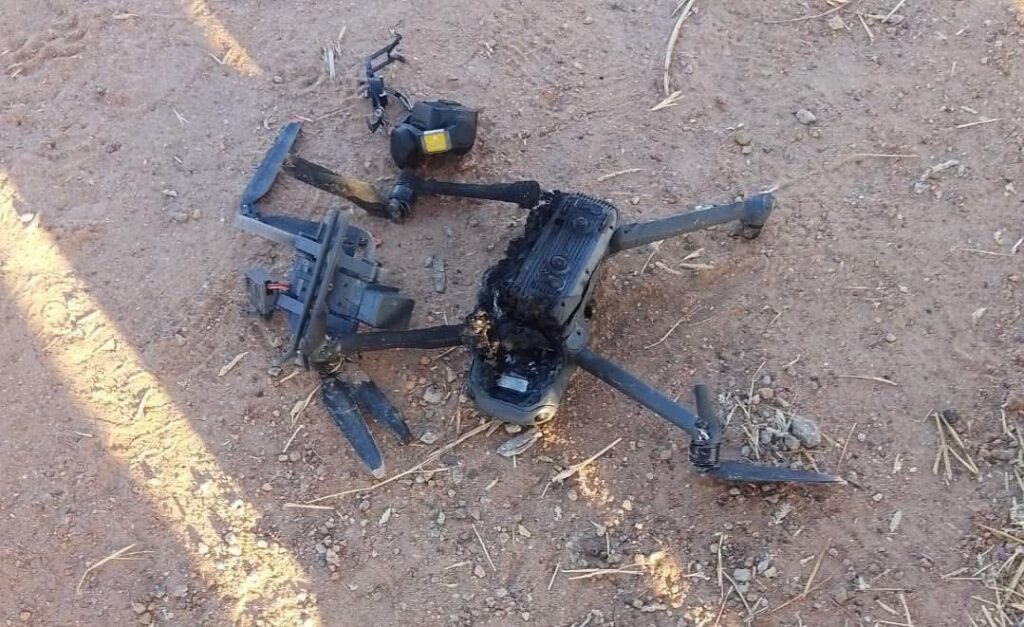Islamic State West Africa Province extremists have begun using weaponized drones in their attacks against government forces in the Lake Chad Basin, marking a major shift in tactics for the terrorist group.
Like many other extremists, the group also known as ISWAP previously used small, commercially available drones for intelligence-gathering and creating propaganda videos. Fighters used drones to monitor troop movements and to film their forces in training camps as a way to recruit new members.
In 2022, ISWAP released a video showing aerial video of military camps and vehicles that it said it had filmed using drones to spy on the Nigerian army and the Multinational Joint Task Force (MNJTF).
In December 2024, however, ISWAP upped the ante when it launched four drones armed with grenades against the Nigerian military’s Forward Operating Base Wajiroko in the northeastern Damboa region. The drones were involved in a two-part assault against the base that also used conventional ground-based attacks that injured five Soldiers.
Two other armed-drone attacks followed in Damaturu in Yobe State and Abadam on Lake Chad.
“The use of armed drones in battlefield operations is a dangerous new phase in ISWAP’s insurgency that challenges existing counter-terrorism strategies in the region,” analyst Taiwo Adebayo wrote for the South Africa-based Institute for Security Studies. “That represents a disturbing evolution in tactics and sophistication and raises the question of how regional forces can adapt to this new warfare.”
Nigeria’s National Counter Terrorism Center launched a review of its anti-terrorism strategy earlier this year to address threats such as drones in the hands of ISWAP and other terror groups.
“The tactics used by non-state actors keep evolving and have become highly unpredictable,” Maj. Gen. Adamu Garba Laka, the national coordinator of the terrorism center, told a gathering of stakeholders in Abuja in February.
In many cases, ISWAP fighters buy commercially available quadcopters and other small drones intended for civilian use. The region’s porous borders make it easy to transport the drones and other equipment to ISWAP bases. As other terrorist groups have done, ISWAP fighters modify the drones to carry small explosives they can drop on targets or use in kamikaze attacks.
According to the Armed Conflict Location & Event Data organization, non-state actors such as ISWAP are outpacing national governments in the race to add drones to their arsenals. Between 2018 and 2023, the number of non-state groups who committed at least one drone attack rose 1,400% from six to 91.
Easy access to drones gives non-state actors an important tool for asymmetric warfare, according to researcher Rhordan Stephens with the Institute for Economics and Peace.
By using drones, ISWAP has increased its ability to launch high-impact attacks while minimizing the potential harm to its own side. “The group could transform military outposts and relatively secure civilian locations into precarious targets,” Adebayo wrote.
That would give ISWAP more than a tactical advantage — it would have a powerful psychological advantage against both military and civilian targets, Adebayo wrote.
The appearance of armed drones on the battlefield is a new challenge for the MNJTF, which is composed of troops from Cameroon, Chad, Niger and Nigeria. In response to ISWAP’s use of armed drones, task force members are exploring ways to counter the technology. Nigeria, for example, has adopted a Lithuanian-made device, the EDM4S SkyWiper, that jams drones’ control signals, disrupting their data transmission and navigation signals. By pointing the SkyWiper at an approaching drone, users can cause the drone to crash or to return to its starting point.
Despite the arrival of anti-drone technology, the influx of drones on ISWAP’s side of the Lake Chad battlefield remains a concern for many observers.
“That’s the reality of emerging security,” Nigerian security analyst Chidi Omeje told Voice of America. “They have these links with terror networks, so they’ll naturally grow in these proficiencies. So, it’s up to us to devise ways to counter those technologies they’re using.”

